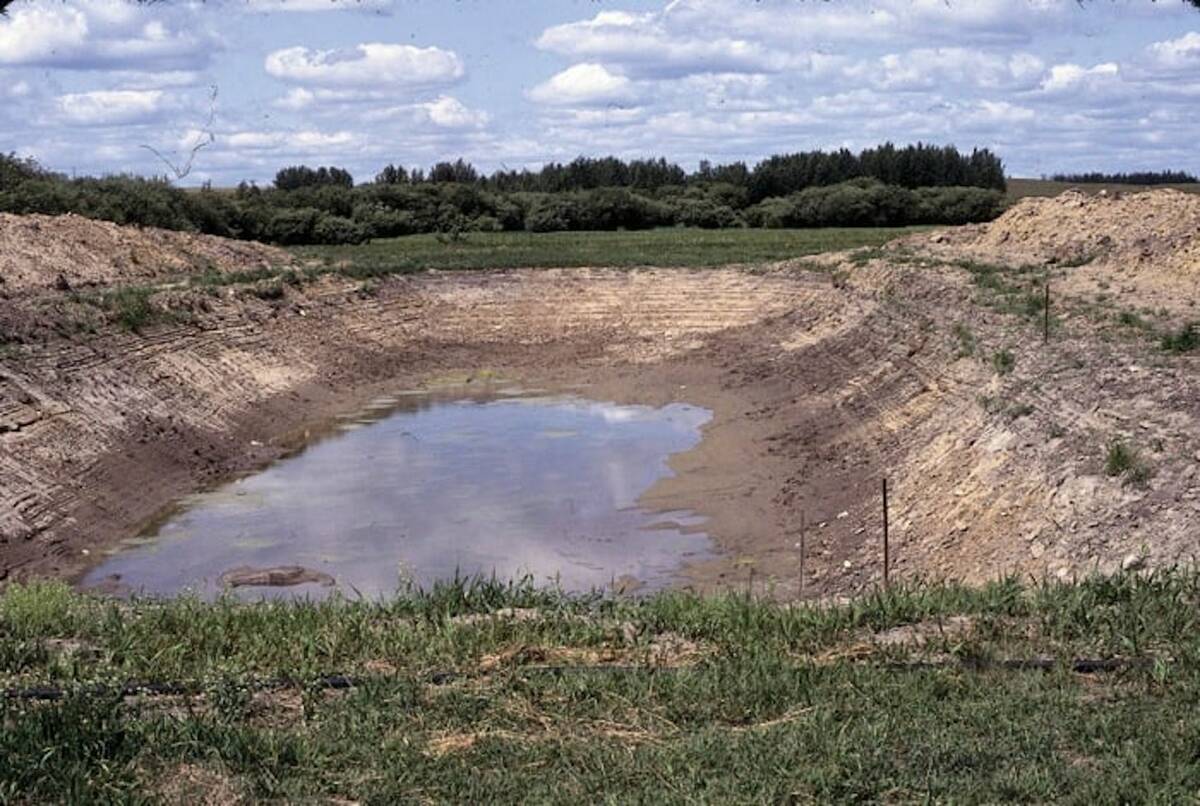OLDS, Alta. – Compost can work well as a replacement for chemical fertilizer, but every situation requires nutrient testing because the product is variable.
“It can vary greatly depending on which soil you put it in,” said Richard Johnson of the Alberta
Research Council.
“We can’t take a standard soil and put a compost in and get a standard control that we can apply across the board,” he told the Olds College composting conference in May.
“We have to recognize the differences in soils and the fact that the soils can cause compost to act differently.”
Read Also

Dry summer conditions can lead to poor water quality for livestock
Drought conditions in the Prairies has led to an decrease in water quality, and producers are being advised to closely monitor water quality for their animals.
Last year the Alberta Research Council and Olds College ran trials that showed compost applied at varying levels had adequate amounts of essential nutrients like nitrogen, phosphorus and potassium.
However, compost costs $120 per acre, nearly twice as much as chemical fertilizer. Researchers believe those costs could be reduced over time.
The research council compared composted hog manure, a commercially prepared poultry litter compost and a chemical fertilizer on black and gray soil types.
Soil samples were incubated at 21 C for varying lengths of time and nutrient release was measured. The compost applications were balanced to provide 40 kilograms of nitrogen per acre.
Under optimum test conditions they found 5.5 tonnes of compost per acre on a dry weight basis provided 40 kg of nitrogen to the soil, eight kg of phosphorus, 16 kg of potassium and seven kg of sulfur.
In the hog manure compost, nitrogen and phosphorus were released quickly, but potassium was slower. In the poultry compost and commercial fertilizer, all three elements were slow to enter the soil.
Researchers didn’t grow plants on the soil to measure their nutrient uptake.
Bob Winchell of the Olds College Centre for Innovation said compost on barley-oat silage plots performed as well as commercial fertilizers, provided appropriate rates were applied.
The centre evaluated crop yields under various rates of application and monitored soil conditions for physical, biological and chemical changes following applications.
It used compost developed at the college that contained 10 kg of nitrogen per tonne. The soil needed 56 kg of nitrogen per acre and 18 kg of phosphorus.
The researchers applied compost at rates between three and 8.5 tonnes per acre. To meet nitrogen requirements, they probably had too much phosphorus. About three tonnes of compost provided necessary phosphorus levels.
The college hopes to repeat the trials for several years to measure the effect of weather and other variable growing conditions.
They also want to learn if compost has a cumulative effect on the soil that could reduce the levels applied to fields in subsequent years.

















